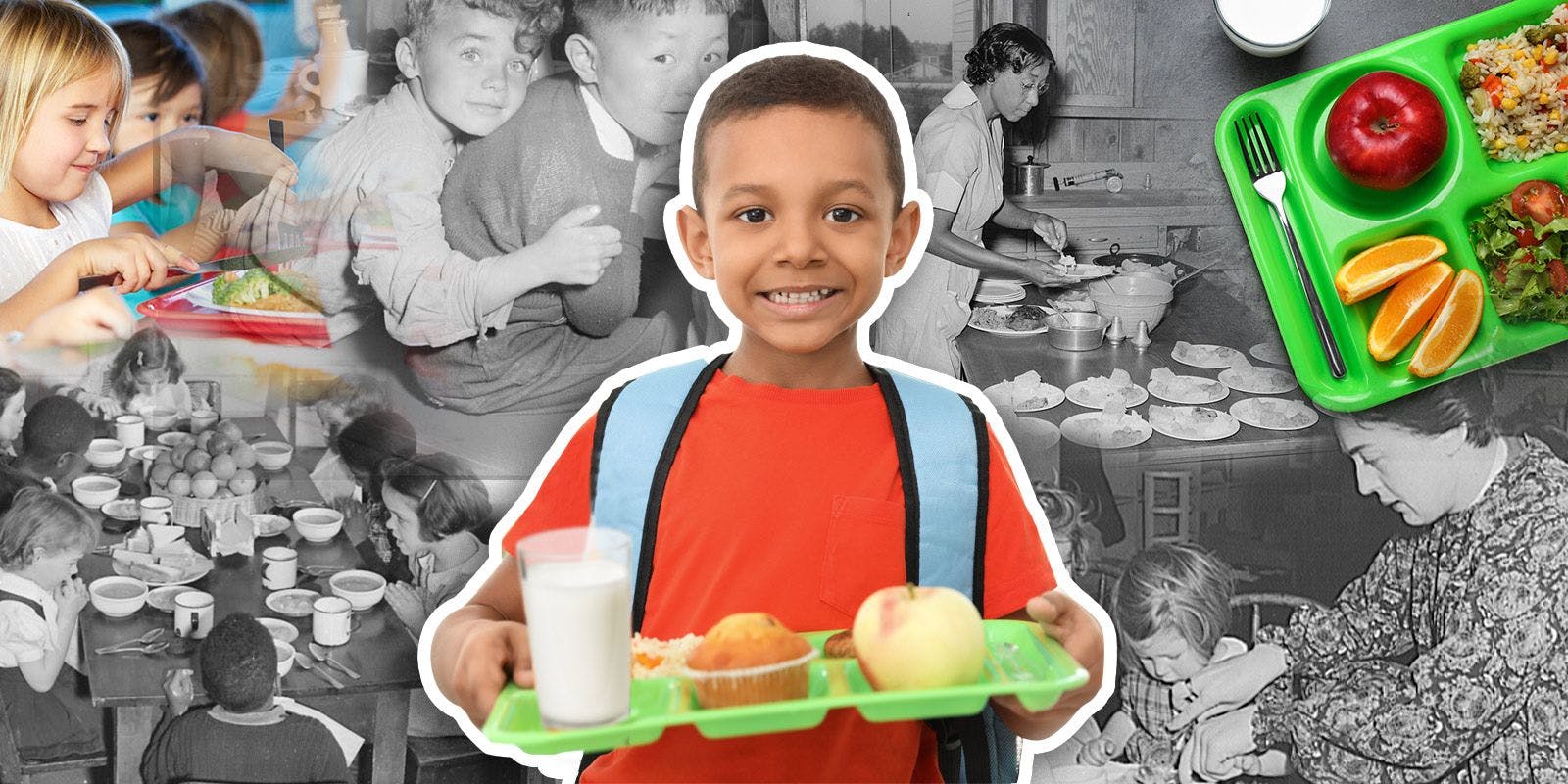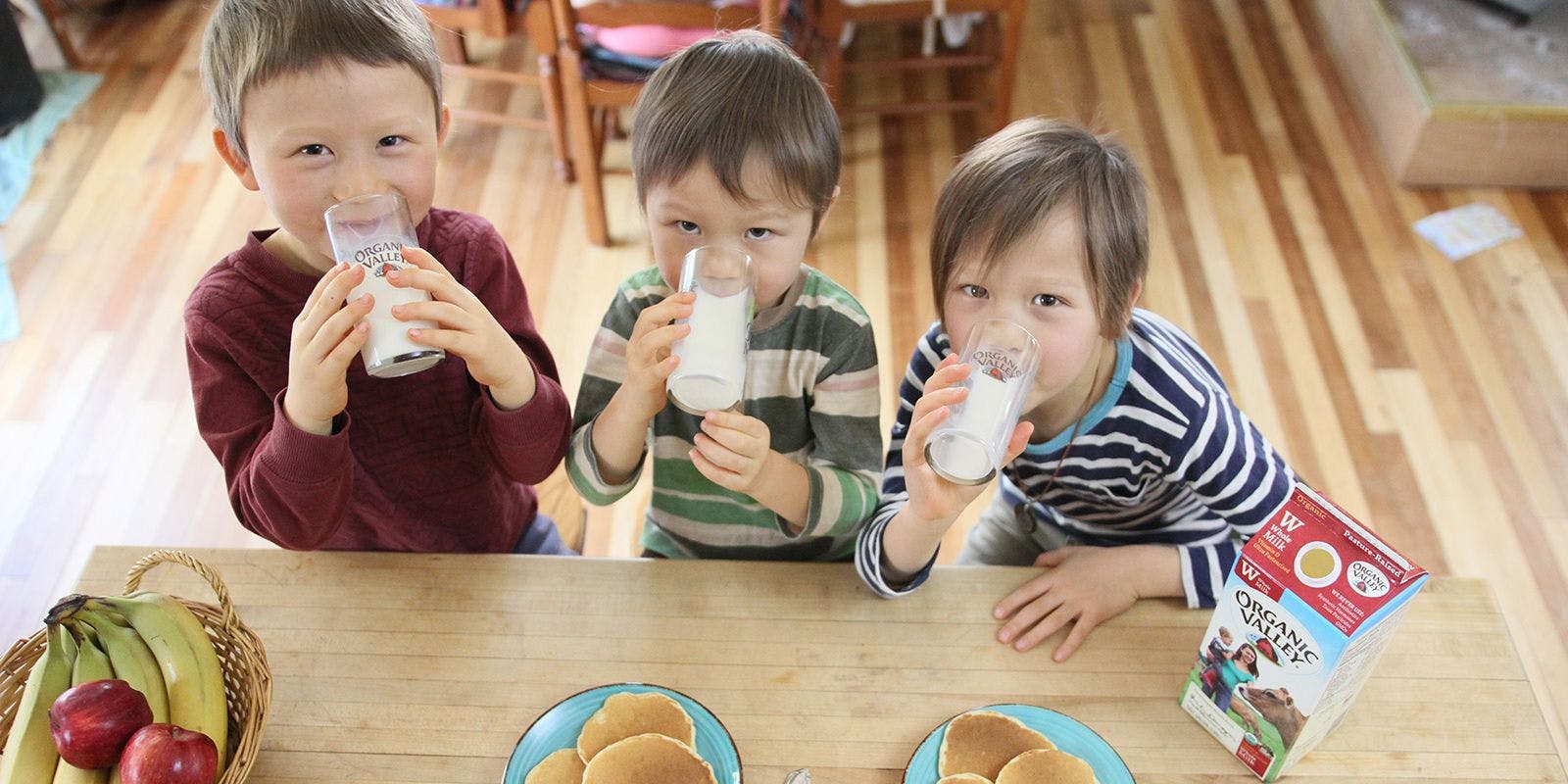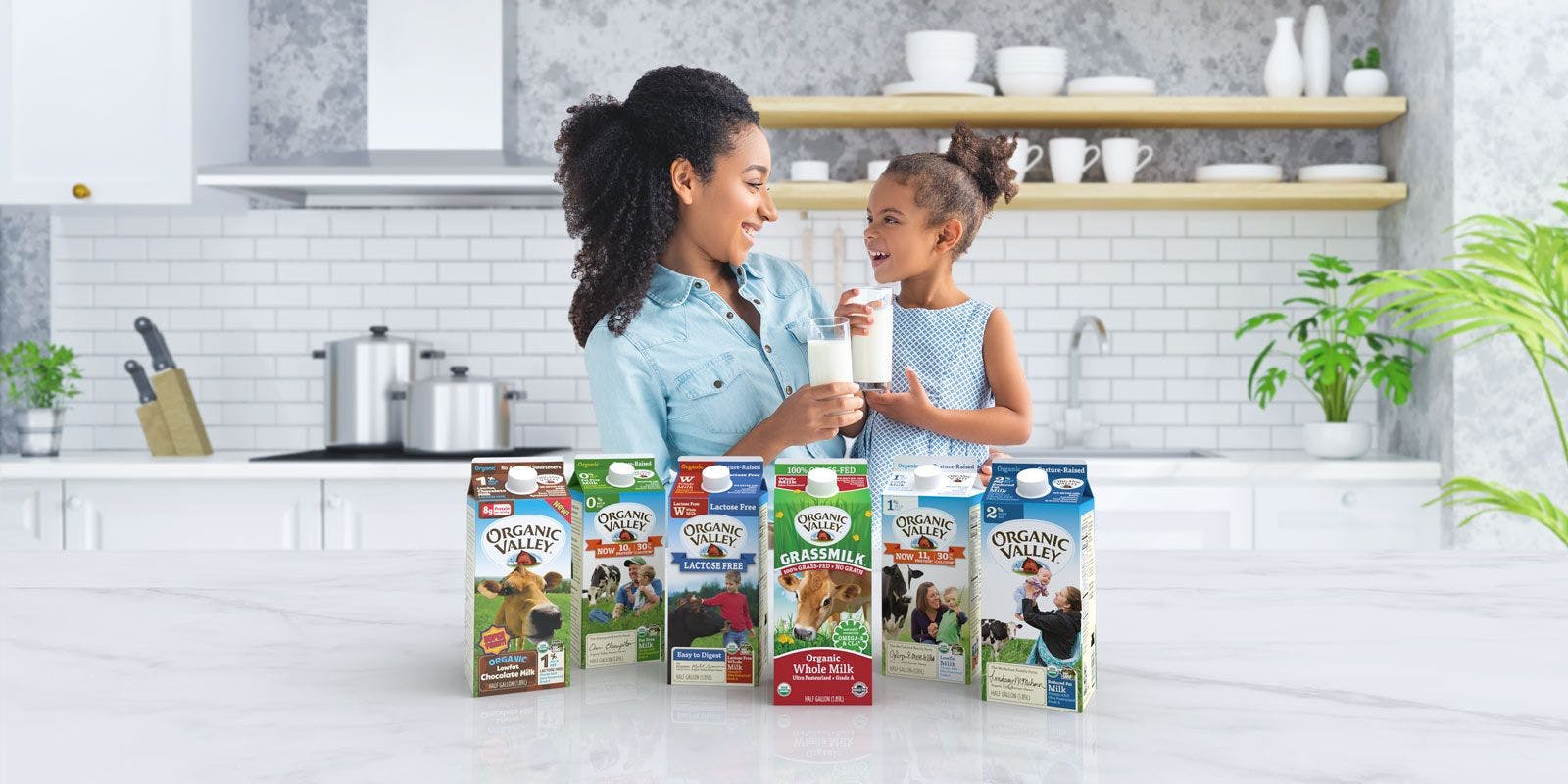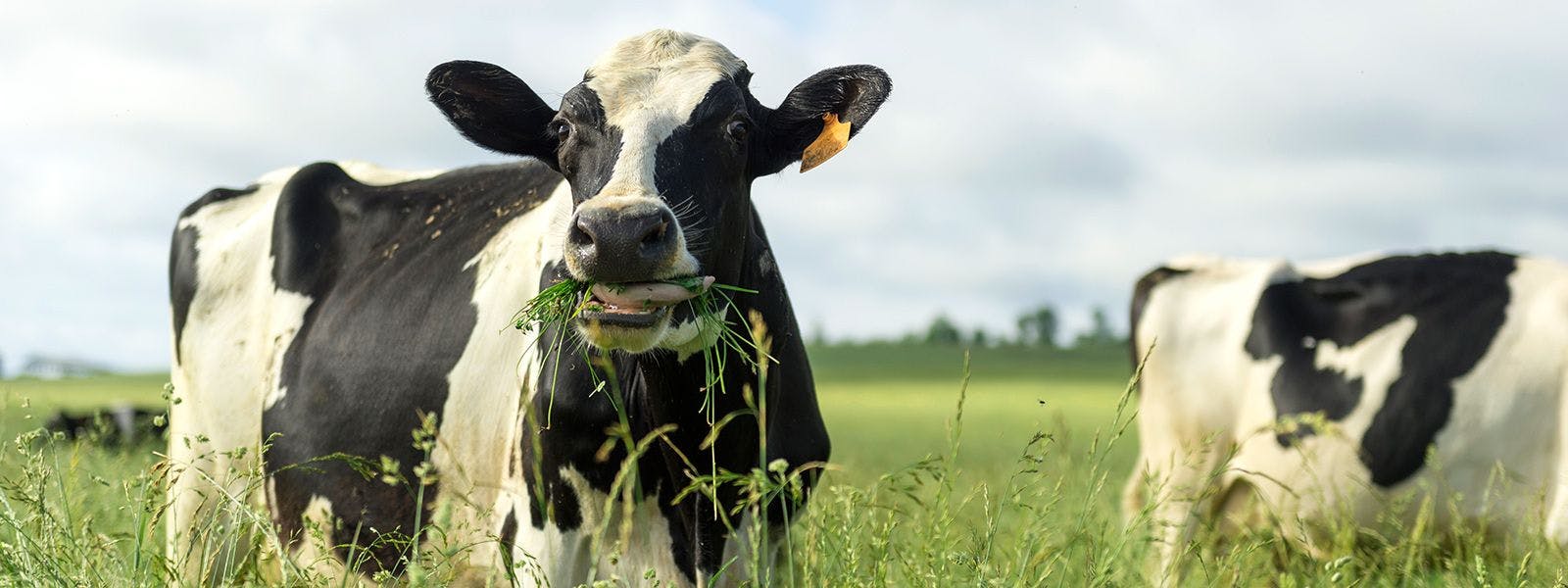
Food
A Brief History of School Lunch: Part 2 - Moving Forward
This is the conclusion of our two-part series on the History of School Lunch. If you missed part 1, pop back there to read about the events that led up to where we are today and looking forward.
Today, 30 million kids receive school lunches every day. About 20 million kids eat free or reduced-price meals. Most kids consume half of their calories in the school setting. Local school districts can decide how they meet the federal nutritional guidelines, which means they can use federal reimbursement dollars to procure ingredients from local farms through the farm to school and Good Food Purchasing programs. And they can learn to cook from scratch with programs like those offered by the Chef Ann Foundation.
Where schools choose to invest their time, money, and energy could build healthy eating habits among students while also having a monumental impact on social equity and climate change.
School Lunch Reform
In 2009, Alice Waters and Katrina Heron wrote a New York Times Op-Ed calling for school lunch reform. Waters wrote that, in Berkeley, California, cooks were using federally subsidized ingredients but cooking meals from scratch and adding local, organic fruits and vegetables—a hybrid approach to balance budget and nutrition. She says that about $27 billion a year, or $5 per child, and a one-time investment in real kitchens, could create cost-savings from improvements to children’s health, food safety, environmental preservation, and energy conservation.

Candy Flores (right), prepares ham and cheese wraps and Rosalba Gomez (left) prepares fresh vegetable cups for the National School Lunch Program in the kitchen at Washington-Lee High School in Arlington, Virginia. The National School Lunch Program is a federally assisted meal program administered by the United States Department of Agriculture, Food and Nutrition Service operating in public, nonprofit private schools and residential child care institutions. It provides nutritionally balanced, low-cost or free lunches to children each school day. USDA Photo by Bob Nichols.
Farm to School
Farm to school programs involve school districts working with local farmers, decreasing transportation costs, and improving freshness. This creates a win-win not only for farmers and the environment, but also for kids, parents, teachers, and workers.
“A lot of workers whose districts switched from pre-packed meals to cooking from scratch with more clean labels and locally sourced ingredients start seeing teachers coming into the cafeteria for the first time ever in their careers,” says Jennifer Gaddis, an assistant professor of Civil Society and Community Studies at the University of Wisconsin-Madison. “They (food service workers) started hearing more positive comments from adults and kids.”
For more, listen to or read Rootstock’s interview with the National Farm to School Network.
Chef Ann Foundation
In the 1990s, as the childhood obesity rates climbed, schools and communities sought ways to improve school lunches. But how? Enter Chef Ann Cooper.
She founded the Chef Ann Foundation, which offers grants to school districts for salad bars and renovations to start-from-scratch cooking operations. Since 2009, the nonprofit has funded 6,000 garden bars at $3,000 per bar and provided 20 Get Schools Cooking grants of $220,000 per district on average.
“For us, success is when all kids are able to eat fresh food at school every day that has not been processed, reheated, and served,” says Mara Fleishman, CEO of the Chef Ann Foundation. “We put the control of the food program back into the hands of the school district and community.”
The transition from a bag of Doritos to local broccoli doesn’t happen overnight. Her advice is to garner school administration and community support to weather the transition from high-fat, sugary foods to whole foods.
The Chef Ann Foundation says the four first steps include:
1) Implement a salad bar, because choice is a great way to get kids to eat healthier foods.
“We ask (districts) to implement salad bars first because it increases access to fresh fruits and vegetables by upwards of 50%,” says Fleishman.
2) Remove chocolate milk and opt for bulk organic milk when possible to decrease the amount of sugar kids are consuming.
“School districts don’t have enough funds to serve a fully organic meal. We work with districts to look at (individual) products that could be switched to organic,” says Fleishman.
3) Create food production hubs.
Rather than revamping all school kitchens in a district, identify kitchens that can create from-scratch meals and deliver them to nearby schools.
4) Replace 25-ingredient deep-fried chicken nuggets with locally sourced, oven-fried chicken.
Chicken nuggets are one of the most popular school lunch meals, so improving this single dish can make a surprisingly large impact.
“We always see a dip in participation after changes are implemented,” Fleishman says. But complaints about things like the removal of chocolate milk disappear within two years, based on the Chef Ann Foundation’s experience.

Organic Valley’s Efforts in Schools
As an organic food company, we believe all children should have access to organic options in schools. Not only is organic good for children’s health, but it’s also great for local economies when schools use their purchasing dollars to buy local, organically grown food.
That said, we also understand the financial, resource, and facility challenges that many school lunch programs face. Here are some of the creative options we’ve worked with schools:
- Bulk milk dispensers provided by Organic Valley allow kids to serve themselves and decrease waste in Boulder, Colorado.
- Support school garden efforts through donations.
- Partner with the National Farm to School Network on initiatives.
We will keep working with schools to get organic options into their lunchrooms whenever possible, and we will continue supporting other nonprofits and community organizations that are making school lunches healthier and more delicious for students across the USA.
Universal School Lunch
“Right now, we have a class-segregated and highly racialized school food system with kids eating the government-subsidized lunches and others providing for themselves,” Gaddis says.
When schools closed in 2020 due to the COVID-19 pandemic, millions of kids no longer had reliable access to food.
“People thought school food was an added value,” says Fleishman. “I don’t think people understood there are kids and families that rely on this food."
Even before COVID-19, a national effort to offer free meals for all kids was starting. Sen. Bernie Sanders and Rep. Ilhan Omar introduced the Universal School Lunch Act in 2019, which would provide free breakfast, lunch, and dinner to kids in school and after-school programs. Some districts already offer universal school lunch or free meals regardless of income.
"Just because someone doesn’t have enough money to eat, doesn’t mean what they eat should be of lesser quality."
- Mara Fleishman , CEO of the Chef Ann Foundation
Boston was one of the first cities to offer a school lunch program and was also one of the first to offer free school lunch to students of any income in 2019. Previously, 78% of Boston Public School (BPS) students qualified for free or reduced-price lunches.
“This takes the burden of proof off our low-income families and allows all children, regardless of income, to know healthy meals are waiting for them at school every day,” said Boston Mayor Thomas Menino (bostonpublicschools.org).
The “Community Eligibility Option,” which started in 2014 as part of the Healthy, Hunger-Free Kids Act of 2010, is also being implemented in Atlanta, Detroit, Chicago, and New York City. A universal school lunch program could eliminate lunch shaming, and improve food justice and academic outcomes.
“Children can focus on learning when they are well-fed, and families can focus on education when they don’t have to budget for school meals every week,” said BPS Interim Superintendent John McDonough (bostonpublicschools.org).
Fleishman argues that high-quality, healthy food needs to be central to all school meals, whether they are free to all or not.
“There’s a long history of looking at hunger relief as caloric relief,” says Fleishman. “Just filling a belly is inequitable. Just because someone doesn’t have enough money to eat, doesn’t mean what they eat should be of lesser quality. Food is at the center of justice and equity issues."

Healthy choices of fresh fruit, salads and vegetables at Washington-Lee High School in Arlington, Virginia. USDA Photo by Bob Nichols.
Double Bonus
Public school systems have the power to advance both equity and sustainability. And what they do could have a ripple effect for other large institutions.
“Institutions are a huge piece in the food system,” says Fleishman. “Without them, we’re not going to be able to make the changes that we need (in order to) create a healthier planet.”
Programs like the Center for Good Food Purchasing link small-scale farms and processors to large institutions in their area. One of the program’s goals is to improve the “equity, affordability, accessibility, and consumption of high-quality, culturally relevant Good Food in all communities” (Center for Good Food Purchasing). They offer a 25-item checklist that includes things like purchasing seasonal, whole foods, eliminating deep-frying, and replacing unhealthy items with healthy items near registers.
Gaddis argues that school lunches could drive social and environmental change while supporting local producers and farmers.
“Not only could we provide people across the food chain with livable wage jobs,” says Gaddis. “We could also get a high percentage of foods from smaller-scale farmers, cooperatives, and other kinds of food and farm enterprises that are more value-based.
“That’s absolutely the role that a public school food program should play in society. It shouldn’t just be a reflection of our current food system, it should be a driver for really making the food economy we want to see."
Hannah Wente began her interest in food systems as a 4-H kid in southeastern Wisconsin. She holds a Master’s in Public Health from the University of Wisconsin–Madison and is interested in the ways food shapes our collective well-being. You can find her taming weeds at her community garden plot or paddling the nearest lake.
Related Articles
- Tags:
- innovation



















